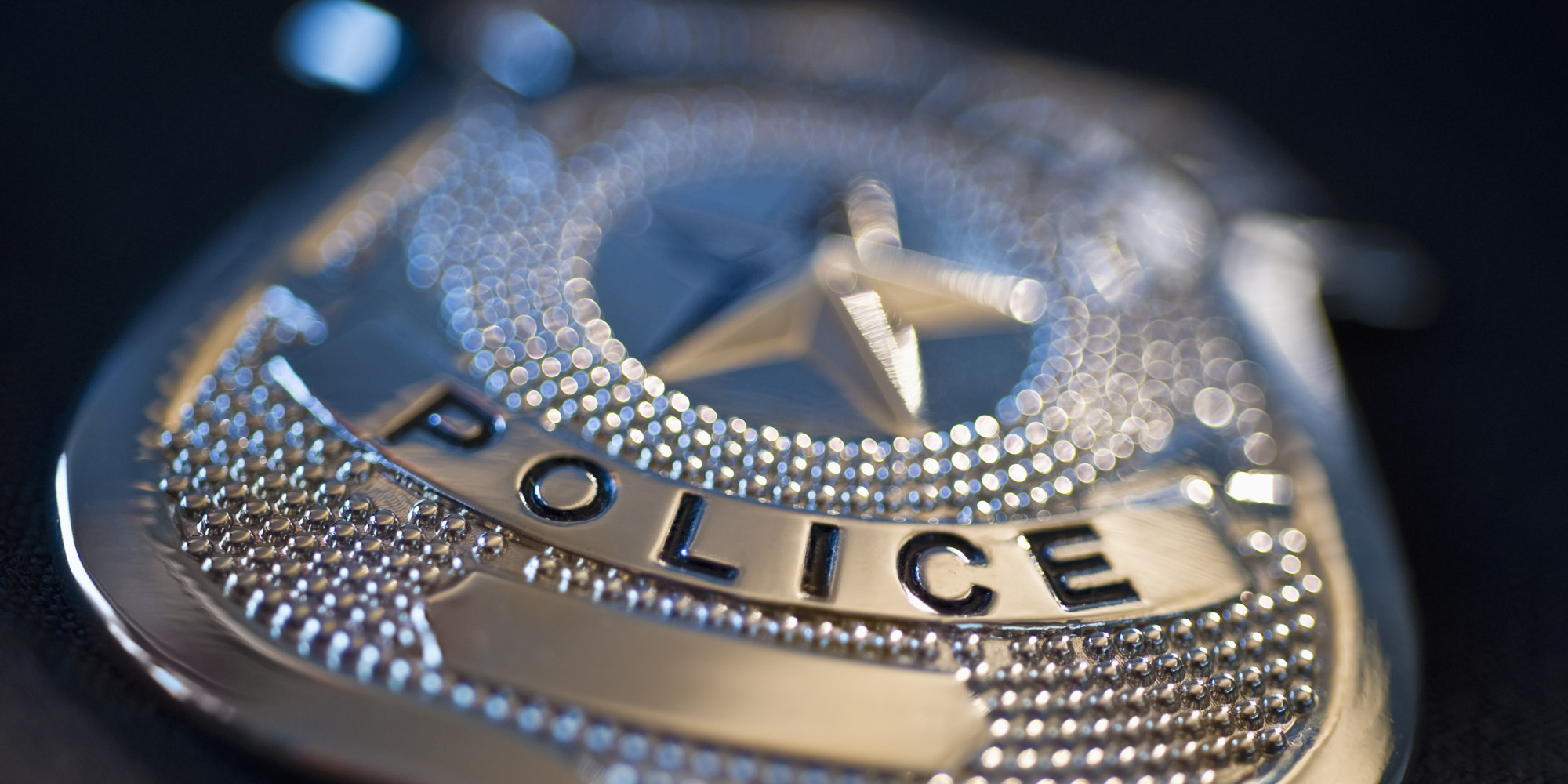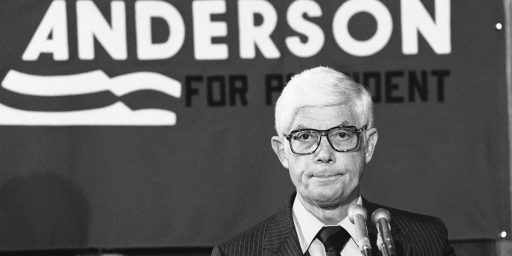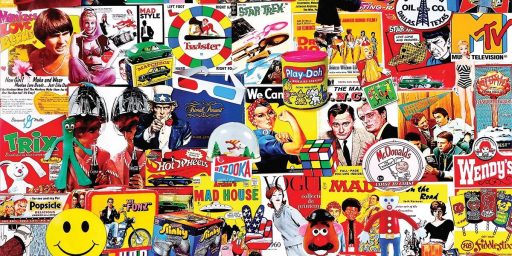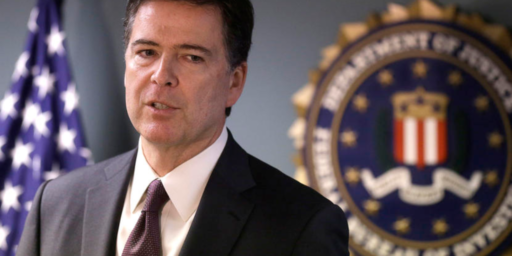Defunding the Police
A Brooklyn neighborhood is experimenting with a hybrid approach.

I’m not quite sure what to make of the NYT report “What Happened When a Brooklyn Neighborhood Policed Itself for Five Days.” Here, the obligatory anecdotal lede is useful:
It had been a quiet April afternoon until about a dozen teenagers began running up Pitkin Avenue in Brownsville, yelling and cursing. They were chasing a girl of about 14 and it was clear they wanted a fight.
Five plainclothes police officers watched warily. Across Pitkin stood about half a dozen men, civilians in jeans and purple-and-gray sweatshirts.
“They got it,” an officer said.
The teenagers slowed as they spotted the men, workers from an organization called Brownsville In Violence Out, who calmly waved them in different directions. They scattered as the girl fled down a side street.
The brief encounter encapsulated a simple yet unorthodox concept that is at the heart of a bold experiment organizers believe could redefine law enforcement in New York: letting neighbors, not the police, respond to low-level street crime.
Several times a year, workers from Brownsville In Violence Out stand sentry on two blocks for five days. The police channel all 911 calls from that area to the civilians. Unless there is a major incident or a victim demands an arrest, officers, always in plainclothes, shadow the workers.
The civilians have no arrest powers. But they have persuaded people to turn in illegal guns, prevented shoplifting, kept a man from robbing a bodega and stopped a pregnant woman from hitting a boyfriend who had not bought a car seat and a stroller as he had promised.
They are part of the Brownsville Safety Alliance, a group of neighborhood and city groups, police officers and members of the Kings County District Attorney’s office that is trying to ensure that fewer people are arrested and entangled in the criminal justice system.
On the one hand, it sounds promising. On the other, this gives me pretty strong Guardian Angels vibes. What was once a feel-good story about citizens standing together to protect the weak eventually became a more troubling tale of vigilante justice.
Then again, in this instance, police are directly involved in a supervisory/backup/support role. And it goes beyond a glorified neighborhood watch program.
As the men and women from Brownsville In Violence Out watch for trouble, agencies offering services like free child care and addiction recovery sit at folding tables, distributing pamphlets and luring passers-by with games, stress balls and pens.
Over the next three years, the city will provide $2.1 million to help link the local organizations that participate most frequently in the Safety Alliance so that they can work cohesively throughout the year.
The experiment, naturally, sprung up in thee wake of the protests over George Floyd’s murder at the hands of rogue cops. And it’s the essence of what “Defund the Police” was supposed to be—shifting low-level dispute resolution to groups whose training doesn’t center on the use of violence and intimidation to exert control.
The idea came from Terrell Anderson, who in 2020 took over as commander of the area’s 73rd Precinct. Raised in Brownsville, he promised to rebuild the precinct’s relationship with a wary community.
Editors’ Picks
Muzz, a Muslim Dating App, Takes Its Matchmaking on the Road
Teenagers Can Expect a Strong Summer Job Market
What Does Good Psychedelic Therapy Look Like?
Continue reading the main story
Residents had complained that officers had become aggressive, grabbing men off the street to arrest them for minor offenses. The neighborhood was reeling from the 2019 shooting of Kwesi Ashun, a T-shirt vendor with paranoid schizophrenia, killed as he swung at an officer with a chair at a nail salon.
Inspector Anderson asked residents what the department could do to engender trust.
Among them was Dushoun Almond, a jocular and self-deprecating man who goes by the nickname Bigga.
Mr. Almond, who runs Brownsville In Violence Out, said Inspector Anderson realized that sometimes all that is needed to keep the peace is a person with credibility — not necessarily a badge — telling someone: “Get out of here. You’re bugging.”
“Members of the community see themselves in Bigga,” said Jeffrey Coots, the director of the From Punishment to Public Health initiative at John Jay College of Criminal Justice. The group works closely with the Brownsville Safety Alliance, conducting surveys about the initiative and tracking its progress.
“This is someone who is like me, who understands me and is calling me out on the fact that I’m out of pocket a little bit,” Mr. Coots said.
Deputy Inspector Mark A. Vazquez, who was also raised in Brownsville, took over last year after Inspector Anderson was transferred, and said that he continued the project because public safety is “shared responsibility.”
Inspector Vazquez said he was 4 when his father was shot and that many family members have been incarcerated.
“I know how it is,” Inspector Vazquez said.
To the extent this is successful, then—and all I know about this program is what I’ve read in this one report—it combines significant scaffolding of the non-police groups with well-practiced community policing. In this case, police leadership saw the program as a way for police and community members to cooperate, not as a threat to police. Like it or not, most police seem to have reacted to Defund as borne out of hostility to them.
Not everyone is convinced. Lise Perez, owner of Clara’s Beauty Salon on Pitkin Avenue, has 26 cameras around her store and works behind a counter protected by a thick plastic partition. No one can get in or out without her pressing a button.
“In this area, nobody feels too safe,” she said. “We’re all here surviving.”
The idea of five days in which the police refer 911 calls unsettles her.
“It’s like they left us without protection,” she said. “It doesn’t give me peace.”
But Minerva Vitale, 66, who lives on the avenue, said the effort was “incredibly important.”
“We call them and, poof, they come right away,” she said. “You think they ain’t ready for this? Yes, they are.”
Again, I simply don’t know enough to have a strong opinion. All I have is a report from the NYT police bureau chief—who’s only been at the paper three-and-a-half years and was previously on the travel and breaking news beats. I have no idea what her agenda might be or how good her sources are.
Still, the effectiveness of the program has to be judged, at some level, against the status quo ante, not perfection. Do residents feel safer now than before? More trusting of the police? More willing to report suspicious behavior? I don’t know the answer to any of those questions.






I got Guardian Angel vibes too.
But experiments like this are necessary to see whether other options will work and work better, depending on how one defines “better.”
Most of these environments are overpoliced to an insane degree, and the police are not good at dealing with someone’s bad day or just people cutting loose. They simply are not good at this, and in my opinion, there are fewer and fewer good police, simply because these people will not join the police. Do this for generations, and everything ‘normal’ for someone who goes to college and parties and then gets a job is upside-down, and then add in an easy access to guns, and total economic discrimination and you have the hood.
That said, stopping someone from trying to take out a bodega is great–but it’s pretty unclear what the long-term solution is here for the person trying to take out the bodega, which is, overall, a bad idea for that person. Crime really does not pay for most people, and if knocking over a store is your solution to a money problem, it’s a bad one. That said: giving 17-year olds who are acting up a chance to walk away rather than bust them is a positive.
I think for a community at large, where most people have a better handle on their lives than the few who don’t, it’s good to do this rather than have the police (who are not from the community) out there standing on corners looking at their phones while representing authority.
I have some concerns.
1) Citizen volunteers are not employees. Employees have to work whether they feel like it or not. On a freezing NYC January night, will they be there? And when a rando stabs one of the volunteers, how many volunteers keep showing up?
2) Power corrupts. (Not my original observation.) Assemble any group of men, give them a mission to protect and they will almost immediately begin edging toward more action, more need for their services, as well as more hierarchy.
3) I believe the loss of respect for police has a core cause: the blue wall of silence. Cops covering for other cops, becoming protective of the group at the expense of truth or accountability. If one of the volunteers fucks up, maybe loses his temper and punches someone, will the group follow the law or cover for one of their own?
This quote reminded me of a draft Facebook post I had written to post to my more “conservative” Facebook family and friends….
What are the goal posts or standards you will use to judge the performance of the next administration?
We constantly see how people adjust their judgement of an elected official, a project, or some new policy or appointee, based on their prejudices against (or for?) that circumstance.
For example, unemployment figures always get picked apart by “conservatives” when there is a Democratic administration, based on “facts” that the stats are supposedly not trustworthy and alleged fudging due to not representing people who have given up on looking for work…but never have issues with the Republican party is in place during those low numbers.
So what would be the measures that would represent a well planned/executed and effective police reform? How will we take those measurements? Who will do it, and how will it be reported? Who will assess the process and outcomes against those standards?
You ask some good questions as I quoted above, and are not an expert (I think?) on law enforcement policies and outcomes, so it’s natural to be reluctant to pre-define the vision of what success would look like. But we could start to pre-define those ahead of the initiative and revisit them as new information comes up.
This has potential downside but conventional policing also has problems. In high crime areas you have a combination of policing issues and community issues. They dont trust each other. The community doesnt act much like a community. If this effort or others generated by communities can instill a real sense of community and start building trust that could help crime issues a lot.
Steve
@Michael Reynolds:
Pretty much what happened in Baltimore last year. Policing versus over-policing discussions are usually the perfect example of people talking past each other and then patting themselves on the back for their insight. Do some of these neighborhoods have armed teenagers and young men packing guns, stoned and looking for victims or a fight, and making it extremely dangerous for a cop to approach them? Yes. Portraying everyone the police come across in the neighborhood as simply a youth looking for a job is just playing pretend. And do some cops view these neighborhoods as an excuse to be the tough guy and beat people up just to show they have to be respected? Yes. And responding to every report of police misbehavior with “the officer was responding according to protocol” and allowing them to continue on just kills any hope of trust-building. Yet, at least here in Baltimore, I rarely if ever hear anyone acknowledge the realities the other side sees.
On the other hand, there’s this: Traffic cop sues city over ‘get-out-of-jail-free’ cards for NYPD friends and family
@Michael Reynolds:
I thought of that, too.
It’s fine to run an experiment with volunteers, but if it will work on a permanent basis, then it needs to be funded and managed by the local government. So long as it’s not made a part of the police department.
And then it has to avoid the pitfalls you mention, as well as several others…
Well, yeah…but…those groups were supposed to be better-qualified social services and public health agencies…not McGruff the crime dog, or even Guardian Angels.
@Michael Reynolds:
While you raise good points, regarding cold weather I will say that while it’s likely volunteers will skip out on freezing cold nights, so will a lot of the criminals.
(The study is useful, but anyone who has lived in a not-so-nice part of town knows the phenomenon of hot weather = more ne’erdowells.)
I genuinely wonder if we compared the Guardian Angels to the NYPD at the time, on a per capita basis, which did more harm.
@Daryl: Oh, for sure. And, again, it’s a bit hard to put the pieces together from this one report. But it sounds like they are handing a lot of stuff off to people with more specialized training.
This sort of seems like a program that is doomed to fail, chosen by people who want to be able to say that reducing police involvement doesn’t work. The mayor is a cop, after all.
The volunteers and all presumably believe in it, but it’s a big jump from the most obvious first step of pairing a police officer with a social worker, both on the payroll, with appropriate training.
Maybe I just don’t think big enough and assume all radical change will fail.
One of the things that’s always bugged me about law enforcement policy discussion in America is that “effective policing” is only something academics care about. When high crime areas exist, conventional political wisdom pretends that has no implications on whether police are worth a damn.
Always nice to see the people ahead of the pundits.
@Gustopher:
After Jordan Neely was strangled to death, it turned out that the city’s mental department had been tracking him and had a good idea of where he was, but nobody was looking, even though there was a warrant out for his arrest.
So it’s easier for the police to hand over things and not bother than to change how they act and learn to work with others, which may be impossible for cops. It’s a very negative institution. My experience with cops is that they hate everything: the city (which they dream of moving from), where they patrol (no different than Iraq in 2006), and the actual police (who screw them over all the time). In NYC it produced Rudy Guiliani and a police riot in 1992. You don’t see public school teachers acting like that because of charter schools.
One of the problems with the Guardian Angels was the instant stardom that fell on them when the rest of the country became aware of their existence in NYC. Then they became super-heroes and could do no wrong. If expectations are kept to a realistic level, training is thorough, and their appearance is regular, then I’m optimistic. Also, the example of the GAs is there for the organizers to keep in mind as they work.
Basically, they’re doing what any adults in any neighborhood when we were growing up would do. “Hey, knock that off right now!” was good enough for us to calm down and disperse, b***ching about nosy old people as we went. At a very basic level, these volunteers could be restoring that kind of community – you know, the one we always claim to want.
Just got back from a week of training to help facilitate community-run projects like these. Couple of thoughts:
James wrote:
There are couple of major differences between these sorts of community programs from the Angels. First is that these draw directly on community members to patrol their own communities. My understanding of the GA was that they often were patrolling areas outside of their direct geographic community (i.e. riding subways) or, later, entering into high traffic, higher crime areas where they didn’t live (Times Square). In that way, at least at the start, they were about a projection of force, not community. That makes a big difference, as does the fact the Brownsville volunteers are apparently trained specifically in deescalation and to connect people with social services.
The emphasis and I am sure the planning and execution are completely different.
I should also point out that LOTS and LOTS and LOTS of planning and community engagement go into these types of de-escalation programs. And they are often building on lessons learned from other community care and violence inturruption programs. This really is the polar opposite of the Angels.
@Michael Reynolds:
This is a case where having people from the neighborhood volunteer to support their neighborhood makes a huge difference. Generally speaking, the people who get involved with these programs are the ones who show up no matter what. In part, there is also a significant amount of community pressure to show up under harsh circumstances. And programs like this one usually plan for these types of issues (not to mention Neil’s point about trouble makers also not showing up in bad weather).
Plus, let’s not forget that cops and other employees have been known to call in sick on bad days.
Part of the theory of this program is you are less likely to hurt someone from your own community that knows you and yours. And there is some evidence that works in general (I don’t have time to pull it at the moment). That said when it comes to Criminal Legal System interventions it’s always a matter of when, not if, some ugly incident is going to happen. I can all but guarantee that the organizers have already thought about how to handle that situation. And, again, the fact that people are patrolling their own neighborhood makes a big difference. It’s likely that type of incident could lead to mode community engagement.
That said, there’s no way to know until it happens.
@MarkedMan:
Most of us like pretty separated from these zones of police and community contact. As such our understanding of what the people living there think is pretty mediated. I can tell you that on the ground there’s usually a LOT more complexity to the situation. Everyone wants to be safe and communities definitely have really complex views about what that means. I’ve recently been diving into a number of participatory research projects in overpoliced communities of color (as I prepare to run a project that’s going to be kinda adjacent to that) and I can tell you that the dialogs going on in these are often all over the place and so much more subtle that then “police bad, community good” dialogs that make it into the media.
@Gustopher:
Until recently that would have been my thinking. I honestly have been moving on this a bit. A bad social worker from outside one’s neighborhood can be as destructive as a bad cop. And in many areas Social Workers are not seen as “safe”–they are also the people who can take your kids away or cause a lot of other issues. I still think there is a role for them in the process, I have a huge respect for them and I occasionally do cowriting with a Social Worker. But they are not the silver bullet a lot of us naively think they are.
Agree that it’s all great, until the Volunteers become t-shirt uniformed Vigilantes.
But with all this Defund the Police BS, with part of that being “Don’t dial 911”; it’s better than dialing “BLM” when the SHTF !
@mattbernius:
I suspect that if it’s your community they are most likely not a rando.
Also, I would point out with guns and shootings–if someone has a beef with you and you think they might have a gun, you are going to be inclined to have a gun. And vice versa. This escalates all the way up to violence, where someone who starts shooting has a reasonable belief that they are about to be shot. And vice versa. Most people, in my experience, in the community can sense who gets mixed up in violence but might be able to be pulled out vs people who are into deep. Or they have a better idea than the police.
And like what you said about the Guardian Angels—this is not protecting innocents from crime. It’s about trying to free people from bad situations which will help ‘fight’ crime.
It’s easy to nitpick and complain online, but change has to start with citizens stepping up to reach higher than the lowest-hanging fruit. The current system is broken, so let’s see what the marketplace of ideas comes up wifh. Learn more lessons and build from there.
Good to see some Americans still stepping up to actually do something, of course the keyboard warriors would rather drown baby and let the frog keep boiling.
@Modulo Myself:
That’s the theory. And there are still rando encounters that happen regardless.
And yes to the your summary of things.
@DK 100%. This is my take on all of these initiatives (which are usually far more well planned out than come across in excerpted reporting).
The correction there is important, and highlights what drives the desire for these alternatives.
@mattbernius:
In that case, it gives me George Zimmerman vibes.
I get and applaud the intent here, and generally always positive when communities try new things. But if this were happening in, say, a white part of Texas, I think the narratives would be quite different.
I tend to think Gustopher’s approach of pairing cops with another professional is probably more likely to be sustainable.
@Modulo Myself:
I guarantee you are correct – city cops hate locals and it shows. Cops, as a class, hate and despise locals and beat them unless there is a camera around.
When I was a kid it was extremely blatant. Cops especially hate black youths and police them to absurdity. There was no way not to see that.
We white kids got away with a stern word and and a finger wag for blatant vandalism. Black kids got incarcerated for being lippy. It was known.
@Andy:
As always thanks for responding sir. This was one of those cases where I immediately react with “but, it’s completely different… and I can’t explain why off the top of my head in a coherent way.” So I did some thinking and its a mix of (1) environment, (2) training, (3) oversight.*
Environment: Brownsville is VERY different than Sanford, Florida. People live much closer together and are more likely to use the same resources and networks than in a suburb. It’s very much a walking section of NYC. So that creates a different dynamic than someone patrolling the neighborhood by car. Honestly I don’t think this type of solution makes sense for the types of communities you see in much of the south (I type this from the really geographically spread out Shelby county).
Training – While I’m not familiar with this program, I know this type of program and volunteers usually have to go through a lot of training–with a focus on desecalation–in order to participate. Zimmerman had no real training in this area. And, in my opinion, I think he made a number of decisions that escalated a situation–especially after he had returned to his car.
Oversight – Again, people don’t just show up. There is volunteer oversight or at least there should be. And that includes cutting people who are not following the rules. Again, I don’t think Zimmerman would have survived in this sort of environment based on my understanding of similar programs. These are really not environments that people who are wanting to get their police on do well in.
*-I am intentionally skipping intent. We will never know what anyone’s intent was that night (especially as one of the two people was killed that evening) and so I think that’s a dead end for discussions.